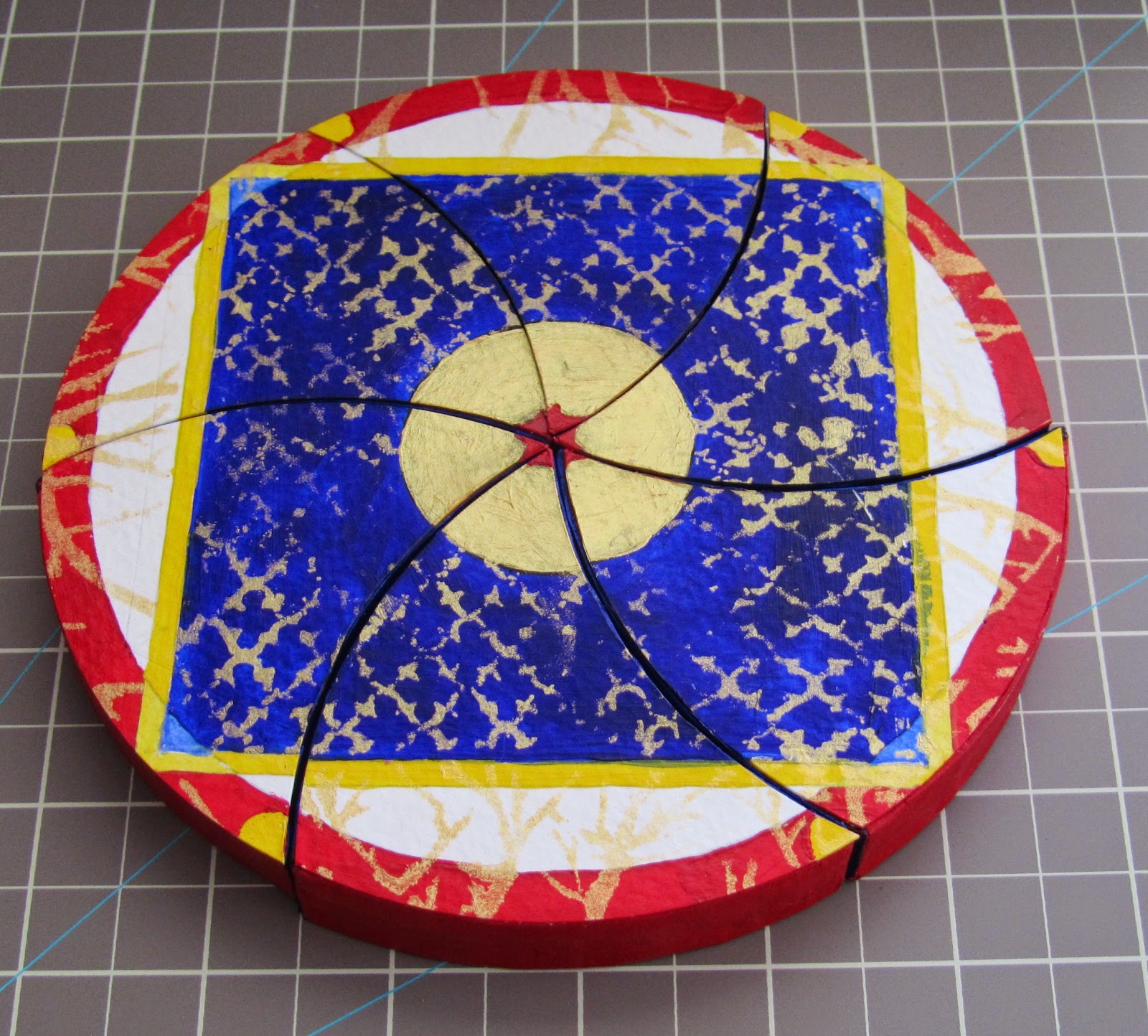I spent a hot weekend here in San Diego trying to figure out how to fold an expandable file book based on
Hedi Kyle's Blizzard Fold. It took some trial and error to get things just right. I think in the end I had to make 5 or 6 models to get a book that would hold ATC size inserts (3.5 x 2.5 inch cards). The book can be modified to make it taller, squarer, wider, etc. depending on the size of the piece of paper you begin with and how much you fold in the long edges.
Below is a series of pictures I took while folding the 3.75 x 2.5 inch model for my
ATC's. Enjoy and please feel free to leave comments. I like to hear from you.
~Gina
1. Cut paper to 7.5 x 20 inches. Fold both long edges in 1/4 of the width (1 7/8 inch). I used a long clear ruler to score and fold these lines since the paper is grained short (the grain of the paper is parallel to the 7.5 inch width of the paper). Once both edges of the paper are folded unfold them in preparation for step 2.
2. Accordion fold the paper into 8 equal sections. The best way to fold paper is to fold it in half, unfold, fold the two edges into the center fold, unfold and finally fold each of these 4 sections in half. Do them one at the time and do not stack the folds as this leads to the paper twisting. Only fold one layer at a time for best results.
3. Fold up all of the accordion folds. Your paper should look like this. The first page should open away from you.
4. This step is where we diverge from the normal Hedi Kyle Blizzard Fold. Follow the steps in the handwritten directions above numbered 1-3. Hopefully, the pictures and lines make sense. When you are done your model should look like the picture above.
5. Open the page and this is how the model looks.
6. Now we need to fold the next section the same way as above, but with two sides. This time we have a bit of help from the previous fold. The angle of the triangle is established by the crease made in the last step. This will help you line up the diagonal that meets in the center of the folded page.
7. This picture shows you what the model looks like once both top and bottom triangles have been folded on one side.
8. Here is the model with both sides folded down and in.
9. Open the next page and repeat the process two more times.
10. Here is the last page ready to have its triangle flaps folded.
11. This is what the back page looks like with the triangle flaps folded in. Notice the overall shape of the model now.
12. This is the top front view of the model.
13. Compare this picture to the one above. See how I have folded in the triangles that stuck out above?
14. Here is what the back side of the model looks like. I kind of like this look too. You could tuck item in here if they were flat enough. In the final book this side will get hidden, though.
15. This is the completed model from the side. The triangular pieces in between each accordion fold give this book its expandability. You can put bulky objects in each section.
16. To finish the book simply attach a cover with narrow spine and you are ready to go. The cover for this size book measures 4 x 5.5 inches. I attached it with glue and double sided tape, but you can use whatever you like.



















































